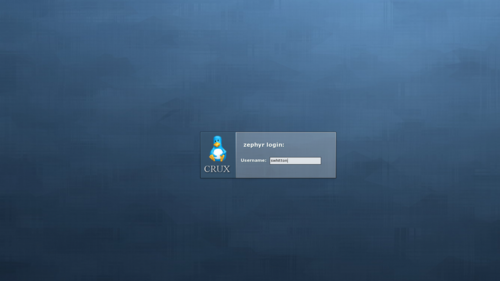Here’s something that made me far happier than it should have done a week or so ago:
I think it’s the CRUX theme that I really like; gives my installation some identity whereas previously if someone said “is this the famous CRUX?” there was nothing to show for it, it’s just my usual Emacs-in-stumpwm setup.
This is SLiM, a login manage I’ve started using at the recommendation of the Arch wiki. A login manager moves your login inside of X, and usually has features for launching different environments, for example a drop-down for Gnome or KDE. SLiM offers this but I’m not using it; SLiM is the standard lightweight choice for people with their own heavily customised environments.
Why is this better than my old approach, where I would login at the tty
(in fact I used autologin) and then my .zshrc calls startx when it
sees that it’s been loaded at tty1? Is this not just a piece of vanity,
an extra process, a tweak that doesn’t achieve anything? In fact there
is a speed advantage to this, even if it’s only a psychological one.
Firstly I’m not logging on at any TTY which means no shells spawned for
the sake of it, but further the time spent logging into SLiM gives
background processes more time to settle, so Emacs then opens up faster
once the graphical session gets going. The login is necessary because on
my desktop there is no disc encryption so I need some kind of simple
protection from tampering by others.
Far more significant than this is slimlock being significantly faster than vlock at locking and unlocking. This is because you don’t have to switch from a virtual terminal to a graphical session and back for every lock. I’m definitely noticing this speed up.
